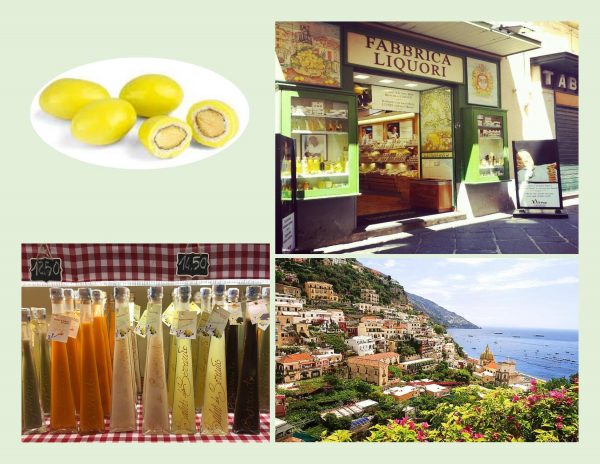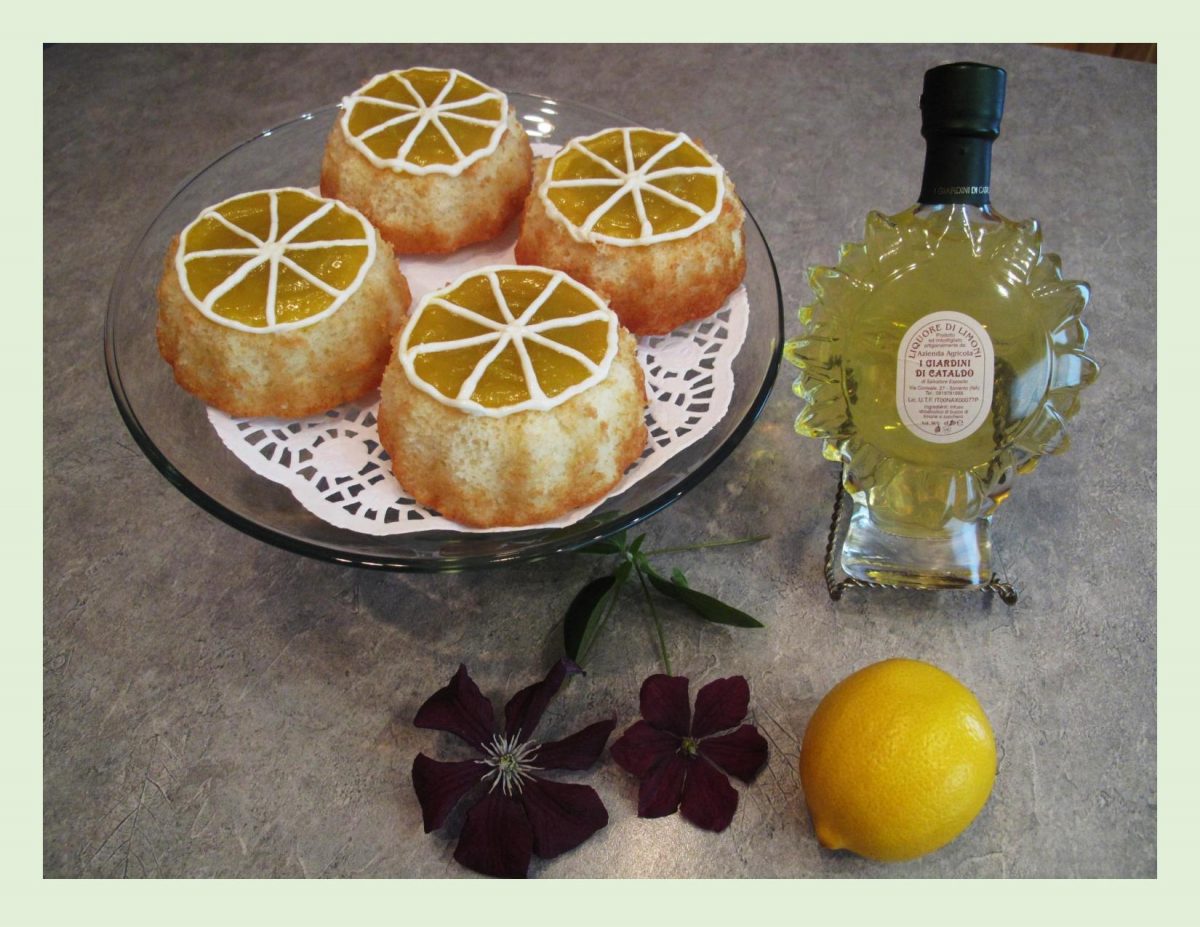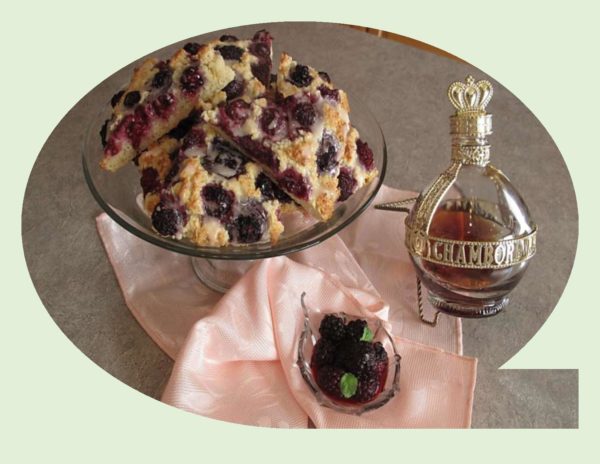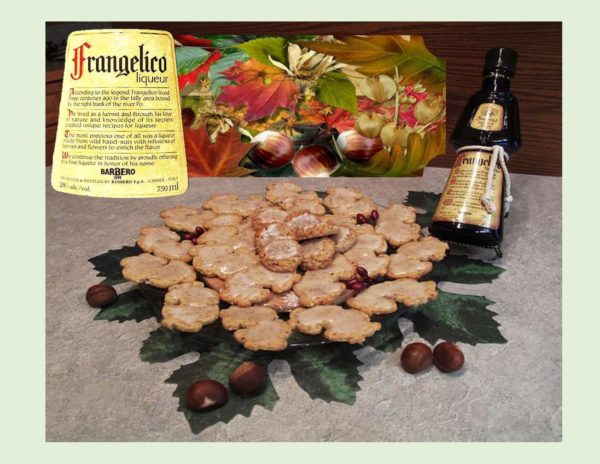Nothing says spring more than the zesty, fresh flavor of lemons. Just to kick it up a notch, I decided to make some limoncello desserts.
Limoncello, (pronounced lee-mon-CHAY-low) the Italian lemon liqueur, is known for its refreshing sweet and tangy flavor. It is made from lemon rinds, alcohol and sugar. Although, traditionally served as an after dinner drink, it is a wonderful ingredient to use in cooking and baking.
Limoncello origins are disputed. Some say it was created by monks or nuns while others credit the wealthy Amalfi Coast families or even local townsfolk. In any case, its roots are in Southern Italy, primarily along Italy’s Amalfi Coast and the Sorrentine Peninsula known for their meticulous lemon cultivation. These lemons are considered the finest lemons for making limoncello. Prized for their yellow rinds, intense fragrance, juicy flesh and balanced acid.
Some years ago, while travelling in Italy, Brion & I tasted athentic limoncello in the town of Sorrento. As we walked through the quaint artisan shops packed together onto a maze of medieval alleys, we came accross one that sold liqueurs & confectionery. One of the treats that they made were limoncello sugar coated almonds … to die for!
Today’s little cakes use limoncello not only in the cake but the frosting and glaze as well. Definitely gives them some spring zing!
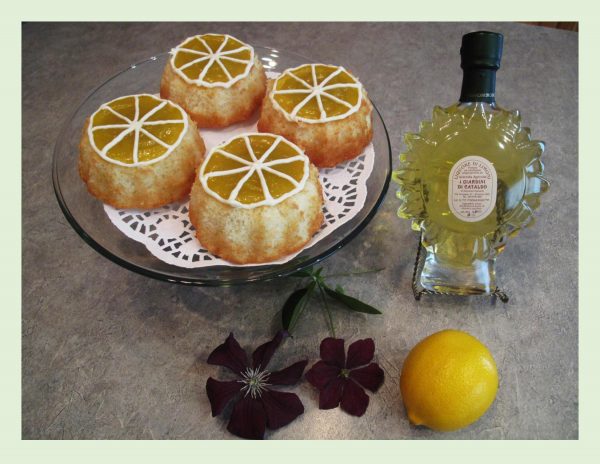
| Servings |
mini cakes
|
- 3/4 cup self-rising flour
- 1/4 cup butter, softened
- 1/2 'scant' cup sugar
- 1 egg
- 3 Tbsp milk
- 3 Tbsp limoncello liqueur
- 2 Tbsp unsalted butter
- 60 gm cream cheese,
- 1 Tbsp limoncello liqueur (optional)
- 3/4 cup powdered sugar, sifted
- 1/4 cup sugar
- 1 egg
- 1 1/2 tsp lemon zest
- 1/4 cup limoncello liqueur
- 1 tsp butter,
Ingredients
Limoncello Cakes
Cream Cheese Frosting
Limoncello Glaze
|

|
- Preheat oven to 350 F. Lightly butter & flour 4 mini bundt pans.
- In a small bowl, cream butter & sugar; add egg & mix well. Fold in the flour then add milk & limoncello; beat well. Spoon mixture into the bundt pans & bake for 18 minutes or until they test done. Allow to cool.
- In a small bowl, beat together butter, cream cheese & limoncello (if using). Add powdered sugar & mix until smooth.
- In a small saucepan, whisk together sugar, lemon zest & egg. Cook until sugar dissolves & the mixture turns light in color, about 2 minutes. Stir in limoncello & cook for about 5 minutes or until mixture thinly coats the back of a spoon, stirring constantly with a whisk. Remove from heat & whisk in butter. Cover with plastic wrap & cool before using.
- Place cakes on a serving plate. Fill the center indentation from the bundt pan with glaze as well as glazing the tops. Place frosting in a piping bag with a tip that has a small hole. Pipe frosting to look like lemon slices.
